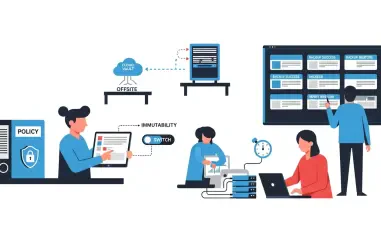In an era where cybersecurity threats loom large, the reliance on default passwords in IoT devices presents a significant vulnerability, leaving systems susceptible to attack. The danger is magnified by incidents such as Iranian hackers gaining access to a US water facility using default credentials, demonstrating how easily attackers can exploit such weaknesses. This review addresses the risks inherent in maintaining default passwords and explores the necessity for manufacturers to rethink their security practices.
Understanding the Security Risks of Default Passwords
Default passwords are widely used by manufacturers to streamline the setup process, making it easier for users to configure their new devices without additional security complications. This approach assists in provisioning devices en masse and supports legacy systems with simpler security structures, yet it also introduces glaring security flaws. Persisting with default passwords can lead to security breaches, creating entry points for malicious actors who can easily leverage these weak spots.
The consequences are severe, with attackers utilizing default passwords to hijack devices for botnet construction or launching ransomware attacks. When these passwords aren’t changed, they provide easy access that bypasses existing security measures, jeopardizing entire networks. Highlighted cases, such as those related to the Mirai botnet, underline the magnitude of threats where default passwords enabled attacks on thousands of devices, resulting in disruptions to major internet services.
Analyzing the Impact of Default Password Negligence
Neglecting to change default passwords can have lasting repercussions beyond immediate security breaches. These vulnerabilities can damage brand reputation, diminish consumer trust, and entail significant operational and legal expenses. The financial toll includes potential regulatory fines under legislation such as the EU’s Cyber Resilience Act, emphasizing the persistent need to address such security gaps proactively rather than reactively.
Legal ramifications aside, organizations also face operational challenges, where neglecting password changes leads to increased resource allocation toward crisis management compared to implementing robust password policies during initial device setups. Integrating enhanced security practices can thus prevent extensive workload demands, safeguarding both company assets and consumer interests.
Advocating for Secure-by-Design Practices
To address these vulnerabilities, manufacturers are urged to adopt secure-by-design methodologies, focusing on individualized credentials for each device and mechanisms like password-rotation APIs for dynamic security. Implementing zero-trust onboarding with multi-factor authentication ensures trusted access, securing devices post-deployment effectively. Integrity checks further bolster device authentication, preventing unauthorized resets and ensuring a security-first development mindset.
Aside from manufacturers, IT professionals in organizations play a crucial role in mitigating risks. They can enforce stringent password policies, ensuring regular audits and updates to credentials. Tools like Specops Password Policy facilitate comprehensive password management, curtailing access to known compromised passwords, and reinforcing security across networks.
Concluding Reflections and Future Directions
In 2025, it became evident that addressing default password vulnerabilities required concerted action from both manufacturers and IT practitioners. Embracing secure-by-design principles helped reduce threat exposure, strengthening defenses against escalating cyberattacks. Moving forward, industry stakeholders needed to continue adopting proactive security measures, embedding robust password management protocols, and facilitating regular device assessments.
Ultimately, eliminating default passwords represented a vital step toward improving IoT device resilience, safeguarding systems, and promoting trust. This ongoing endeavor was essential in fortifying security, protecting critical infrastructures, and maintaining service continuity against malicious threats.













